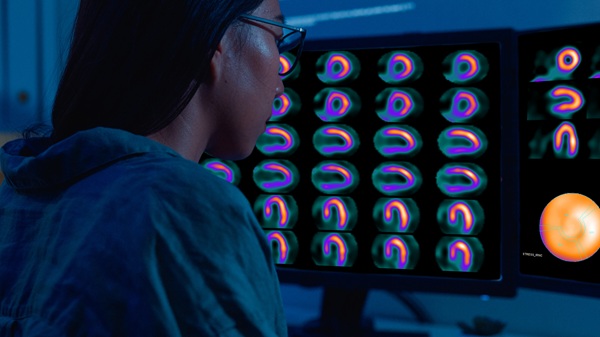Shortened Radiation Therapy Offers Similar Quality of Life for Low-Risk Prostate Cancer Patients
DETROIT – Low-risk prostate cancer patients may be able to undergo a shortened course of radiation therapy that cuts treatment by weeks and offers comparable outcomes and quality of life results as longer treatment courses, according to new study.
Patient’s quality of life – which includes bowel and urinary function, and sexual health – was essentially the same for low-risk prostate cancer patients a year after being treated with hypofractionated, or abbreviated external beam, radiation therapy compared to tradition radiation therapy.
“This study is very important as we’re continuously looking for ways to offer cancer patients care that’s more convenient and value-based” says study senior author Benjamin Movsas, M.D., chair of the Department of Radiation Oncology at Henry Ford Hospital.
“Low-risk prostate cancer patients have many options available, including active surveillance or treatment with surgery or radiation. So those who decide to pursue treatment are increasingly going to be looking for what gives them the best outcome and quality of life.”
This randomized study utilized a validated quality of life instrument for patients with prostate cancer, he adds.
Results will be presented Sept. 26 during the plenary session at the American Society for Radiation Oncology (ASTRO) 58th Annual Meeting in Boston.
Among approximately 3,000 abstracts submitted to ASTRO, only a handful are honored each year with the distinction to be presented at the plenary session. This marks the third time Dr. Movsas’ research has been selected over the past decade to be presented at ASTRO’s plenary session.
For this study, researchers analyzed quality of life for low-risk prostate cancer patients up to a year after undergoing either conventional radiation therapy or hypofractionated radiation therapy.
Conventional radiation therapy is typically given in 40-45 fractions over the course of about eight to nine weeks, while treatment in this study with hypofractionated radiation therapy is given in 28 fractions over five to six weeks.
Researchers studied 1,092 men with low risk prostate cancer, defined as having a prostate-specific antigen (PSA) level below 10, a Gleason score (a classification of the grade of prostate cancer) of 6 or lower, and low T-stage, as determined by a digital rectal exam.
The study, from NRC Oncology/RTOG, revealed that patients treated with hypofractionated radiation therapy had the same urinary and sexual quality of life compared to those who had traditional radiation therapy.
The only difference in quality of life was a small, but significantly larger decline in bowel quality of life after hypofractionated radiation compared to those who had traditional radiation therapy. This small difference, though, was not felt to be clinically meaningful.
“For low-risk prostate cancer patients who do decide they want to be treated, this study demonstrates that hypofractionated (or abbreviated) radiation therapy over 5-6 weeks is a very reasonable and viable option compared to the conventional course of 8-9 weeks,” says Dr. Movsas.
Along with Dr. Movsas, study co-authors are: DW Bruner, Ph.D.; SL Pugh, Ph.D.; WR Lee, M.D.; J Dignam, Ph.D.; D Low, Ph.D.; GP Swanson, M.D.,; AB Shah, M.D.; DB D’Souza, M.D.,; JM Michalski, M.D.,; IS Dayes, M.D.; SA Seaward, M.D.; PL Nguyen, M.D.; WA Hall, M.D.; TM Pisansky, M.D.; Y Chen, M.D.; and HM Sandler, M.D.
For more information on the ASTRO Annual Meeting, visit www.astro.org/annualmeeting. To learn more about Henry Ford Radiation Oncology services, go to Henry Ford Cancer Center.
MEDIA CONTACT:
Krista Hopson Boyer
kboyer1@hfhs.org
.svg?iar=0&hash=F6049510E33E4E6D8196C26CCC0A64A4)

/hfh-logo-main--white.svg?iar=0&hash=ED491CBFADFB7670FAE94559C98D7798)







